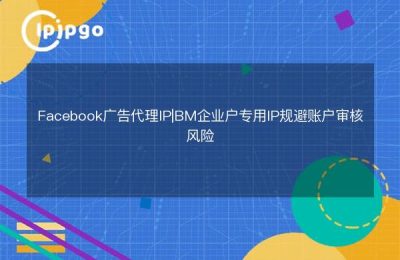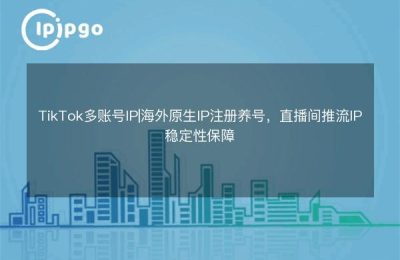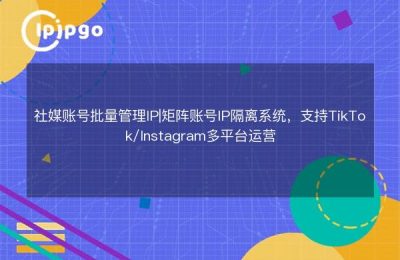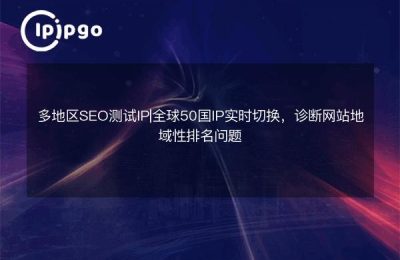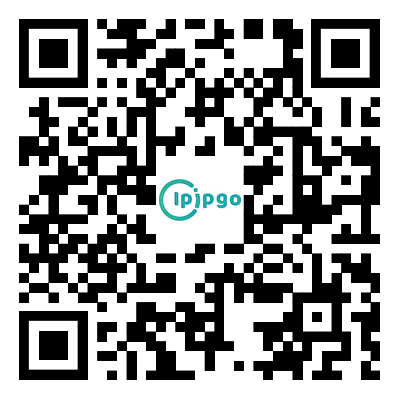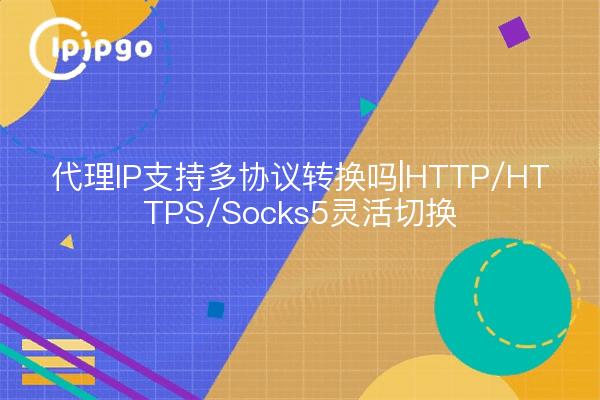
Why do I need proxy IP to support multi-protocol switching?
Many users will encounter this problem when using proxy IP: different software or devices have different requirements for network protocols. For example, some web tools can only use HTTP protocol, while some client software must use Socks5 to run. If you have to change the proxy IP every time you switch the usage scenario, it is not only troublesome to operate, but also may affect the work efficiency.
Solutions for ipipgoIt is compatible with HTTP/HTTPS/Socks5 protocols at the same time through a single set of proxy IPs. Users only need to modify the protocol type in the software settings, and then they can directly switch the usage scenario. For example, you can test the software with Socks5 protocol in the morning and switch to HTTPS protocol for web access in the afternoon, without changing IP address in the whole process.
Comparison of practical application scenarios of the three protocols
HTTP protocol: Suitable for web browser based access, most compatible but less secure
HTTPS protocol: Add encrypted transmission on top of HTTP, suitable for login-type operations
Socks5 protocolSupport UDP/TCP protocol penetration, suitable for games, downloads and other scenarios that require high-speed transmission
When using ipipgo proxy service, it is recommended to choose protocols flexibly according to specific needs. For example, when doing data collection, need to encrypt the transmission of HTTPS, need to deal with large traffic packets cut to Socks5, this free switching ability can effectively improve work efficiency.
How to complete a protocol switch in three steps?
1. In the proxy settings of the target software, locate theProtocol typeoptions (as in computer software settings)
2. Select the desired protocol in the drop-down menu (HTTP/HTTPS/Socks5)
3. Keep the original IP address and port unchanged, save directly to take effect
Taking the proxy IP provided by ipipgo as an example, assume that the currently used address is123.45.67.89:8000If you want to change HTTP to Socks5, just change HTTP to Socks5 in the Protocol field, and other parameters will take effect immediately without any changes. This design avoids the trouble of configuring proxy parameters repeatedly.
Technical advantages of multi-protocol support
Many proxy service providers in the market are limited by technical architecture and can only support a single protocol. But ipipgo has realized three major features through its self-developed protocol conversion gateway:
1. Automatic protocol recognition: Automatically adapts the optimal transmission method based on the request type
2. port multiplexing technology: Multiple protocol requests on a single port at the same time
3. Intelligent Route OptimizationAutomatic matching of optimal line nodes for different protocols
This technical architecture not only ensures the stability of protocol switching, but also dynamically adjusts the encryption level according to the usage scenario. For example, AES-256 encryption is automatically enabled when using the HTTPS protocol, while the transmission speed is optimized under the Socks5 protocol.
Frequently Asked Questions QA
Q: Does switching protocols affect IP stability?
A: When using ipipgo service, protocol switching will not trigger IP replacement. Our system uses session hold technology to support all protocol types on the same IP as long as they are in effect.
Q: Can I use multiple protocols at the same time?
A: Supports the parallel use of multiple protocols. For example, if you set up HTTP proxy in your computer browser and configure Socks5 proxy in the download software at the same time, both connections can be kept active at the same time.
Q: Do I need to re-authenticate for protocol switching?
A: No need. ipipgo adopts a unified authentication system, users can use it under all protocols with their account keys, without repeated authentication.
Key indicators for choosing the right service provider
To determine the multi-protocol support capability of a proxy IP service provider, it is recommended to focus on these three core metrics:
1. Whether to provide fully documented support for protocol switching
2. Existence of restrictions on the use of protocol types
3. Ability to view the status of each protocol in real time on the console
ipipgo not only meets all the above requirements, but also provides protocol usage statistics. Users can see the data traffic, connection success rate and other key indicators of each protocol in the background, which is very helpful for optimizing the usage strategy.
Through the flexible use of the multi-protocol switching function, users can truly realize theOne IP for multiple usesThe effect of the operation. Especially in scenarios that require parallel processing of multiple tasks, this technical advantage can significantly improve resource utilization and reduce operational complexity. As a global proxy IP professional service provider, ipipgo will continue to optimize protocol compatibility and provide users with smarter proxy solutions.

